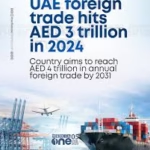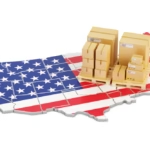In today’s fast-paced global economy, efficient customs clearance is critical for trade facilitation and economic growth. Recognizing this need, Pakistan introduced WEBOC (Web-Based One Customs), a state-of-the-art digital platform designed to streamline customs processes, reduce delays, and enhance transparency. In this blog post, we’ll explore what WEBOC is, how it works, and its impact on trade and businesses in Pakistan.
What is WEBOC?
WEBOC, or Web-Based One Customs, is an electronic customs clearance system developed by the Pakistan Customs to modernize and digitize trade processes. Launched in [Insert Year], WEBOC replaces traditional paper-based procedures with a fully automated, online platform.
The system is part of Pakistan’s broader efforts to improve ease of doing business, reduce corruption, and align with international trade standards.
Key Features of WEBOC
WEBOC offers a range of features that make it a game-changer for customs clearance in Pakistan:
1. Paperless Processing
WEBOC eliminates the need for physical documentation, allowing traders to submit and process customs declarations online.
2. Real-Time Tracking
Users can track the status of their customs declarations in real time, ensuring transparency and reducing uncertainty.
3. Automated Assessments
The system uses advanced algorithms to assess duties and taxes, minimizing human error and speeding up the clearance process.
4. Integration with Other Systems
WEBOC is integrated with other government systems, such as the Federal Board of Revenue (FBR) and Pakistan Single Window (PSW), for seamless data sharing and coordination.
5. User-Friendly Interface
The platform is designed to be intuitive and easy to use, even for first-time users.
How WEBOC Works
The WEBOC process is simple and efficient:
- Registration: Traders register on the WEBOC platform and obtain a unique user ID. Register now!
- Declaration Submission: Users submit electronic customs declarations, including details of goods, invoices, and shipping documents.
- Assessment and Payment: The system automatically calculates duties and taxes, which can be paid online.
- Clearance: Once payments are verified, goods are cleared for release.
- Tracking: Users can track the status of their declarations and receive notifications at every stage.
Contact Bahri for more assistance regarding registration.
Benefits of WEBOC
WEBOC has transformed customs clearance in Pakistan, offering numerous benefits to businesses, the government, and the economy:
1. Faster Clearance Times
By automating processes and reducing paperwork, WEBOC has significantly reduced clearance times, enabling businesses to save time and resources.
- Statistic: According to the World Bank, WEBOC has helped reduce the average customs clearance time in Pakistan from [Insert Days] to [Insert Days].
2. Enhanced Transparency
The system minimizes human intervention, reducing opportunities for corruption and ensuring fair treatment for all traders.
3. Cost Savings
Traders no longer need to spend money on physical documentation, courier services, or delays caused by manual processing.
4. Improved Compliance
WEBOC’s automated assessments and real-time tracking make it easier for businesses to comply with customs regulations.
5. Boost to Trade and Economy
By simplifying customs procedures, WEBOC has made Pakistan a more attractive destination for trade and investment, contributing to economic growth.
Real-World Impact: Success Stories
Case Study 1: Textile Exporter
A Karachi-based textile exporter reported a 40% reduction in clearance times after switching to WEBOC, allowing them to meet international orders more efficiently.
Case Study 2: Importer of Machinery
An importer of industrial machinery in Lahore praised WEBOC for its transparency, noting that they no longer faced delays or demands for bribes.
Challenges and the Way Forward
While WEBOC has been a major success, there are still challenges to address:
1. Digital Literacy
Some traders, especially small businesses, may struggle with the transition to digital systems. Providing training and support can help bridge this gap.
2. System Upgrades
Continuous upgrades are needed to ensure WEBOC remains secure, efficient, and capable of handling increasing trade volumes.
3. Integration with Regional Systems
Further integration with regional customs systems can enhance cross-border trade and cooperation.
Conclusion
WEBOC (Web-Based One Customs) is a shining example of how technology can revolutionize trade and customs clearance. By simplifying processes, enhancing transparency, and reducing delays, WEBOC has made it easier for businesses to thrive in Pakistan’s dynamic trade environment.
As the system continues to evolve, it promises to play a key role in driving economic growth and positioning Pakistan as a competitive player in the global market.






